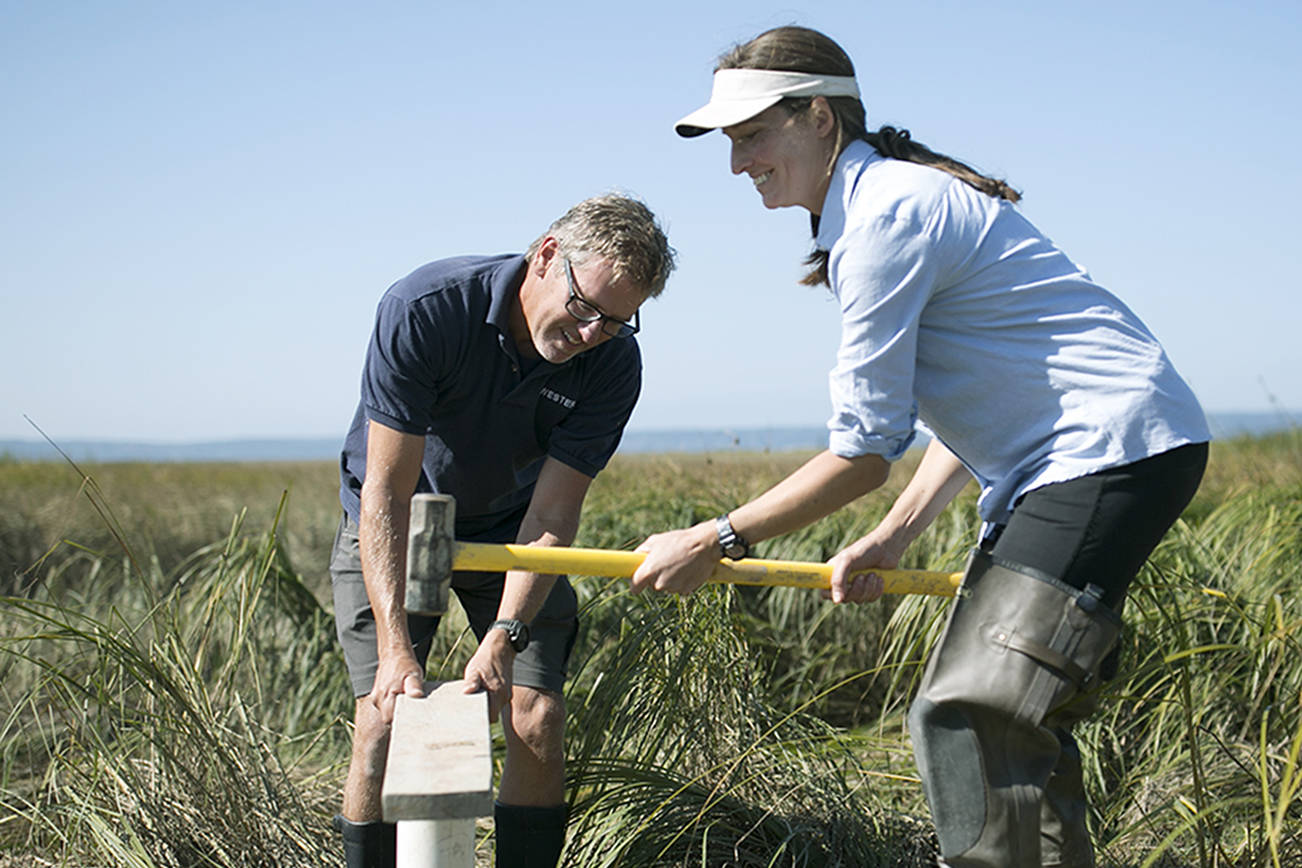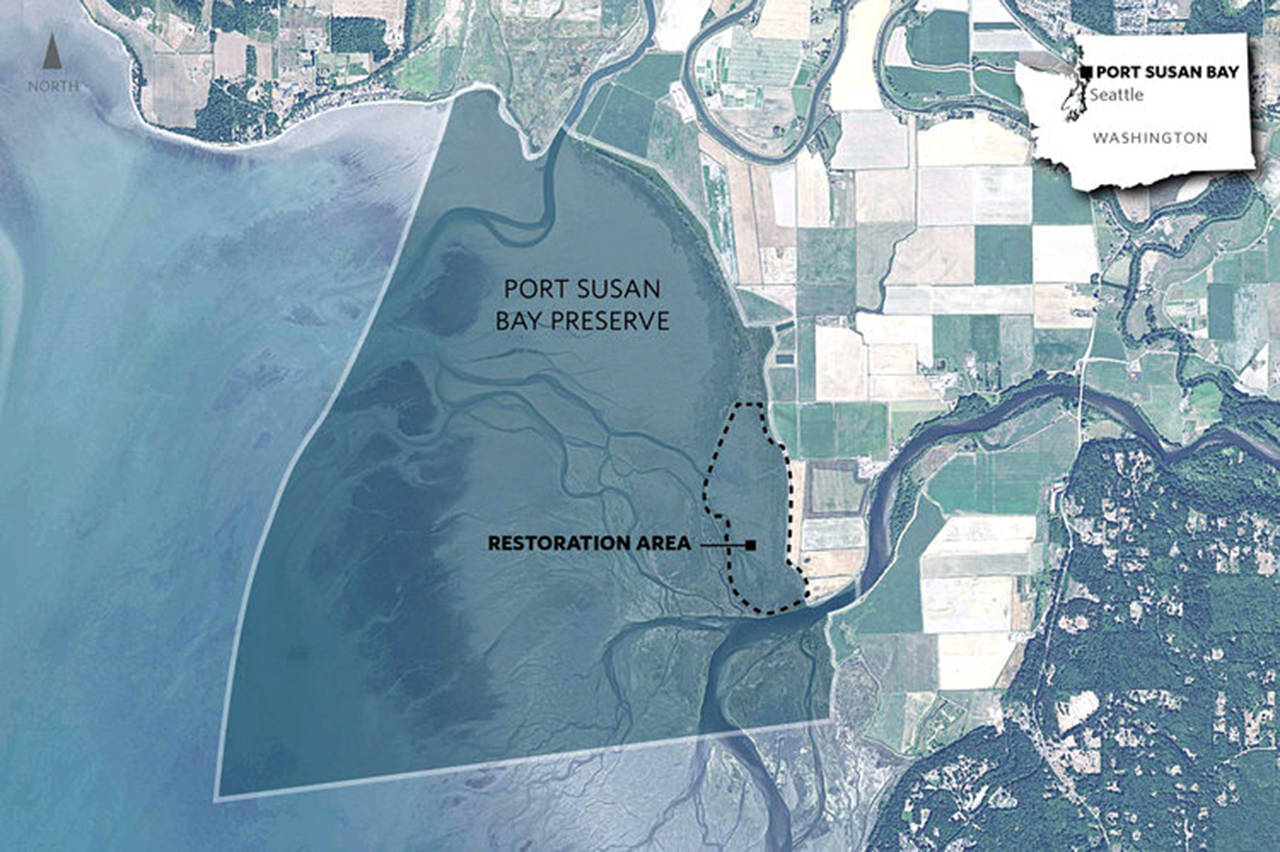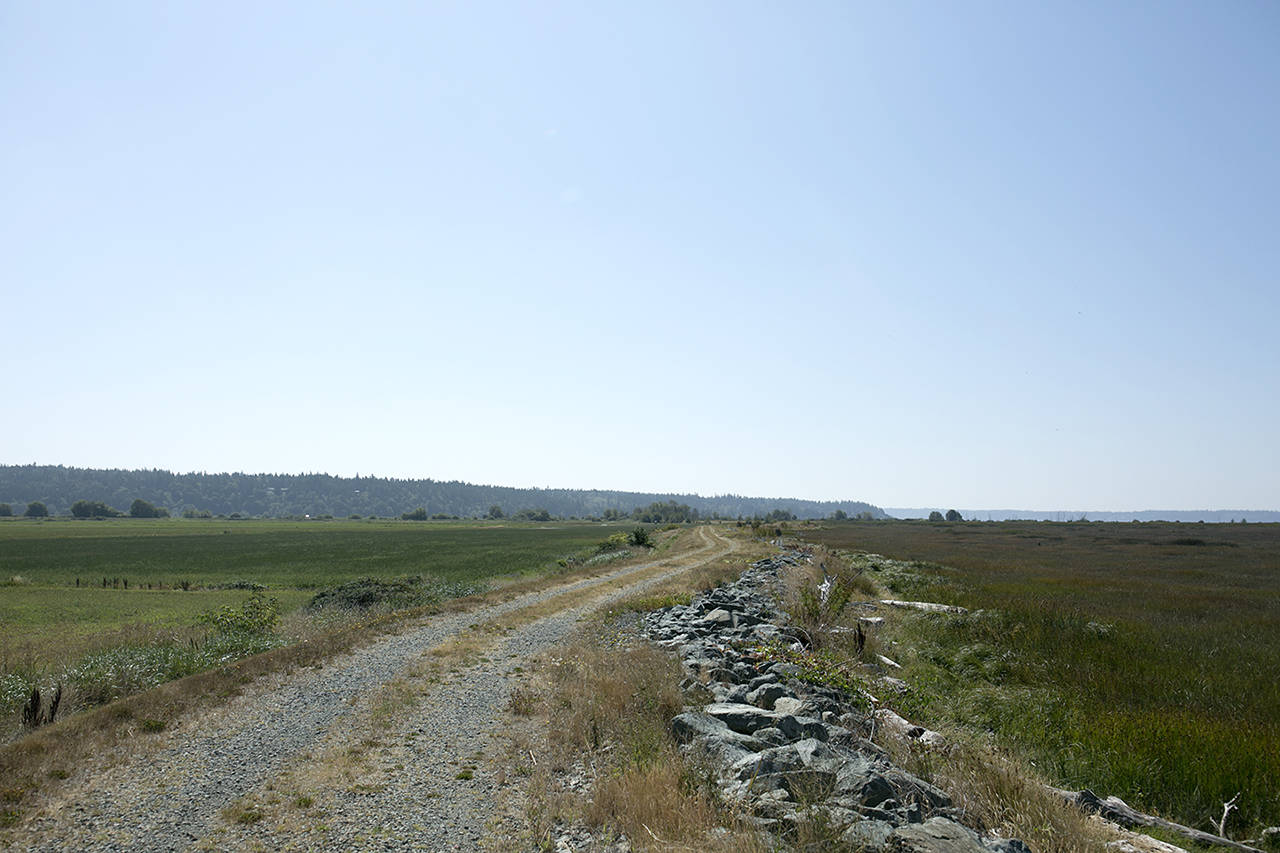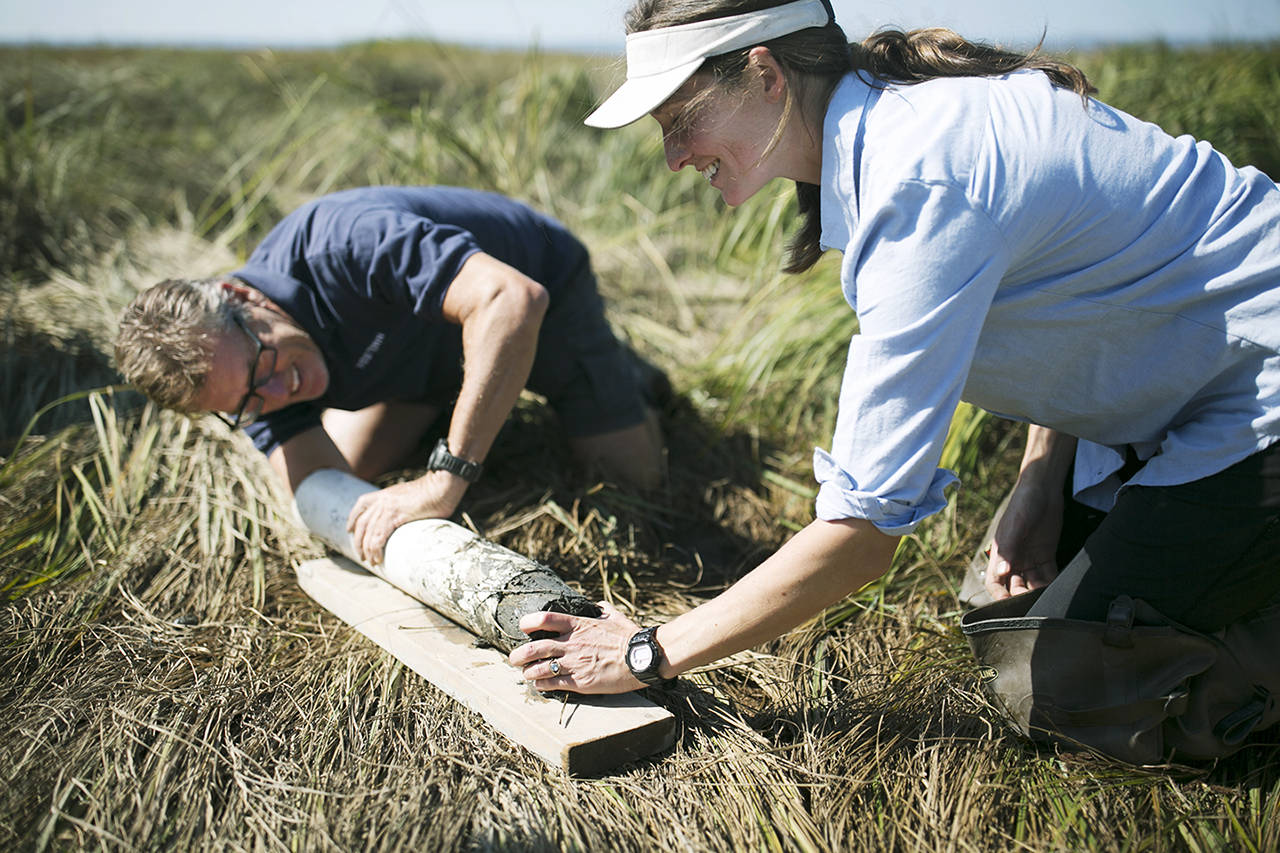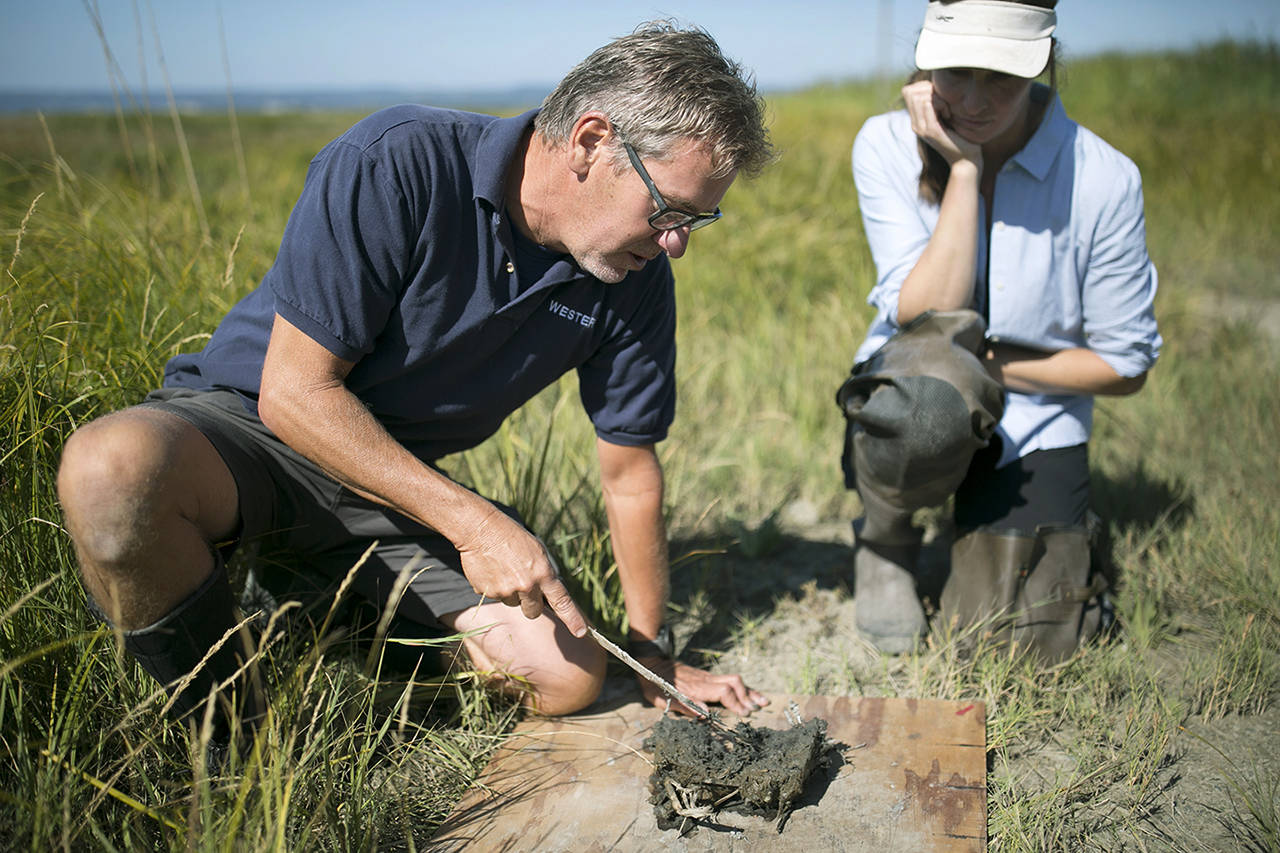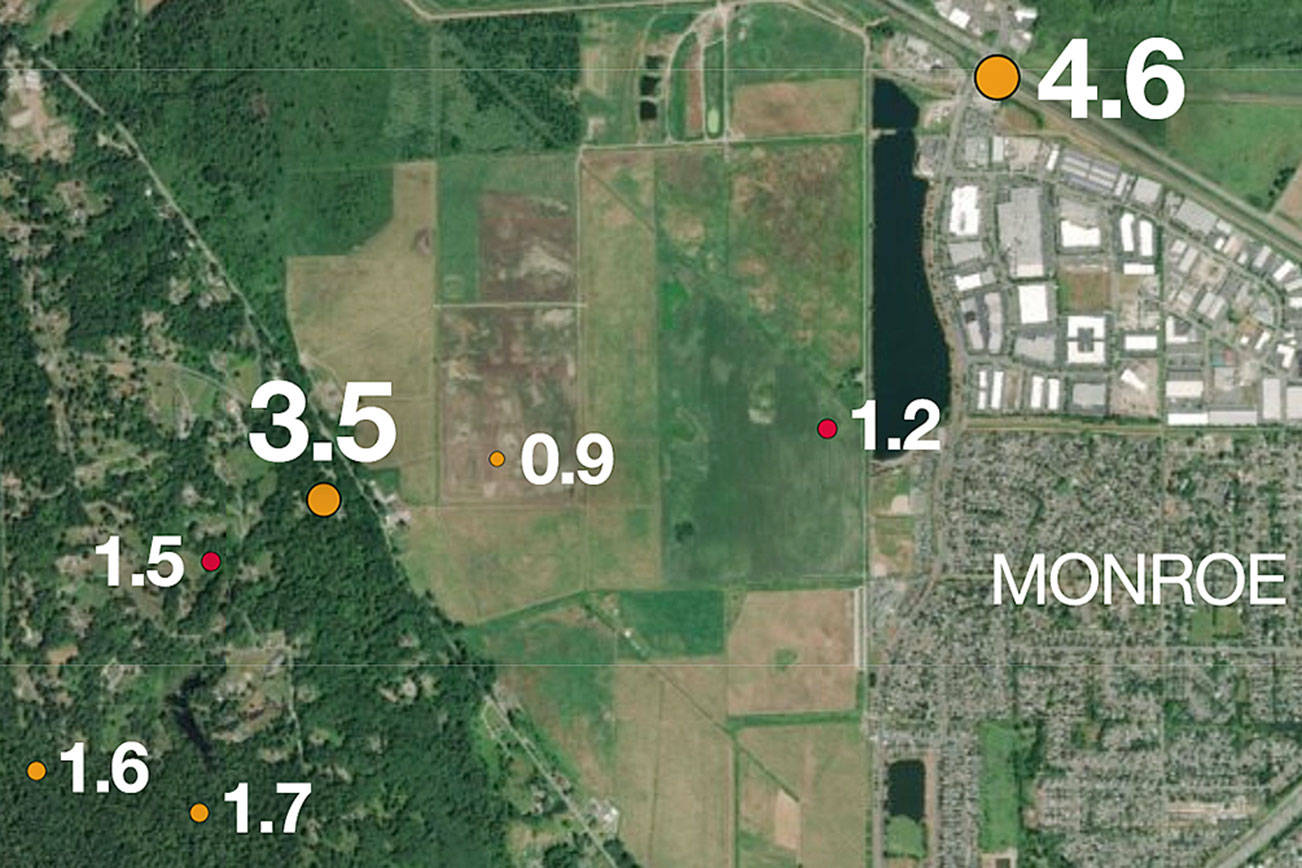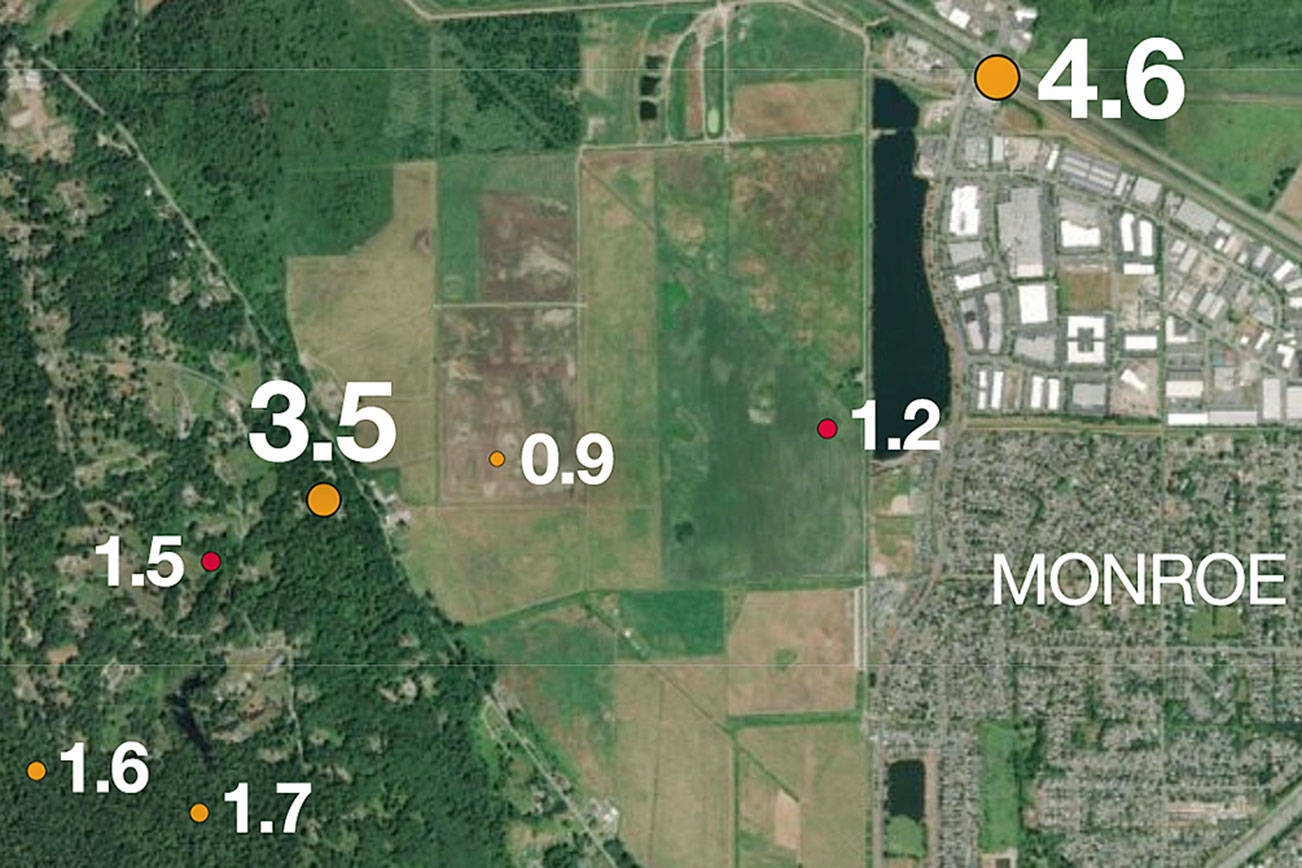STANWOOD — From atop the dike at Port Susan, emerald farmland stretches to the left. To the right, a mosaic of greens and browns make up a coastal wetland.
At points along the dike, the marsh looks slightly higher in elevation than the agricultural land across the mound.
That slight difference is a success for scientists and conservationists working to restore former farmland back to estuarine habitat.
Since removing a seafront dike in 2012, a 150-acre project area has gained about 8 inches in elevation and is capturing and storing twice the amount of carbon as surrounding marshes.
The potato-shaped swath of land is just north of where the Stillaguamish River meets the sea. It lies in a 4,122-acre nature preserve, which The Nature Conservancy bought from a farmer in 2001.
Back then, the area was overly salty cropland, diked off at the seafront and dry. Fifty years before that, it was estuary — the brackish, marshy area where rivers meet the sea.
In 2012, after working with tribes, neighboring farms and the diking district, the conservancy lowered the seafront barrier, allowing the tides to return.
Over time, the water has etched channels through the site that will allow fish back into the area. Estuary plants like sedges, cattails and bullrushes have returned.
The water in the marsh ebbs and flows with the tide, stopping at a dike the conservancy put in place to protect neighboring farmland.
For the past seven years, the Port Susan site has served as a living laboratory for scientists from Western Washington University to study the impacts and benefits of estuary restoration.
Coastal wetlands are an important habitat for salmon and birds. They filter water run-off from cities and farms and protect the shoreline against rising sea levels. They’re also efficient at capturing carbon and locking it into the ground, making them a valuable tool for fighting climate change.
Researchers have found the restored area is quickly working to catch up to surrounding marshes.
During its time as farmland, the 150 acres slowly lost elevation, sinking as the dry ground compressed. By the time the seafront dike was removed, it was about 3 feet lower than its neighboring marsh.
Now, that depression is reversing as sand, silt and clay from the river and tides are pouring back in.
“It essentially was a bowl, and now it’s filling up,” said John Rybczyk, an applied ecologist and environment professor at WWU.
A marsh can normally build up one-third of an inch in elevation per year. That’s faster than the rate the sea level is rising, giving coastal lands some resilience against climbing oceans.
At Port Susan, the restored land is rising at three times that rate.
“It’s really fast now because it’s kind of making up for lost time,” Katrina Poppe, a research associate at the WWU Wetlands Ecology Lab, said. “It’ll slow down gradually.”
The land has gained about 8 inches since the restoration.
It may not sound like a lot — but “in the natural world, that’s as high as it gets,” Rybczyk said.
On Monday, the two researchers picked through marshy grasses, which were only slightly damp at low tide. Rybczyk grabbed a plastic tube, which Poppe helped him hammer into the mushy ground. They pushed the resulting cylinder of soil out of the tube.
This is one way they gather information about the marsh. They typically freeze the sample, then send it off to a lab for testing.
The two researchers are particularly interested in measuring how much carbon is being captured by plants and packed away into the marsh’s sediment.
Estuaries are proficient at putting this greenhouse gas away for good — even more so than rainforests.
“Really the important thing is not how big a plant is but how much it grows in a year,” Rybczyk said. “Wetlands are amongst the most productive systems in the world so they capture a lot of carbon and make it part of their biomass.”
He and Poppe have found that the restoration is storing carbon at twice the rate of neighboring marshes.
Just as with its elevation gain, the project area will eventually catch up to the surrounding habitat and continue at a slower pace.
Aside from helping reduce greenhouse gasses, estuaries are essential for endangered salmon in Puget Sound.
As the juvenile fish make their way from the river to Puget Sound, wetlands provide a buffer for them to adjust to the salty water and to find plenty of bugs.
“There’s lots of food for those little fish to get fat before they enter that Puget Sound where they have lots of predators,” The Nature Conservancy marine projects manager Molly Bogeberg said.
Today, the preserve at Port Susan looks much like it did before being drained to make way for farmland.
While Rybczyk considers the project a success so far, there’s still work to be done. The restoration area remains a bit salty, which means there’s still some remnants of the old dike keeping freshwater from getting into the marsh.
In the next phase of the restoration, Bogeberg said the group is working to secure funding to continue opening up passageways to the river.
“There are some slight tweaks we can make to the site to improve its function as habitat and also to make it more resilient into the future,” she said.
Julia-Grace Sanders: 425-339-3439; jgsanders@heraldnet.com.
